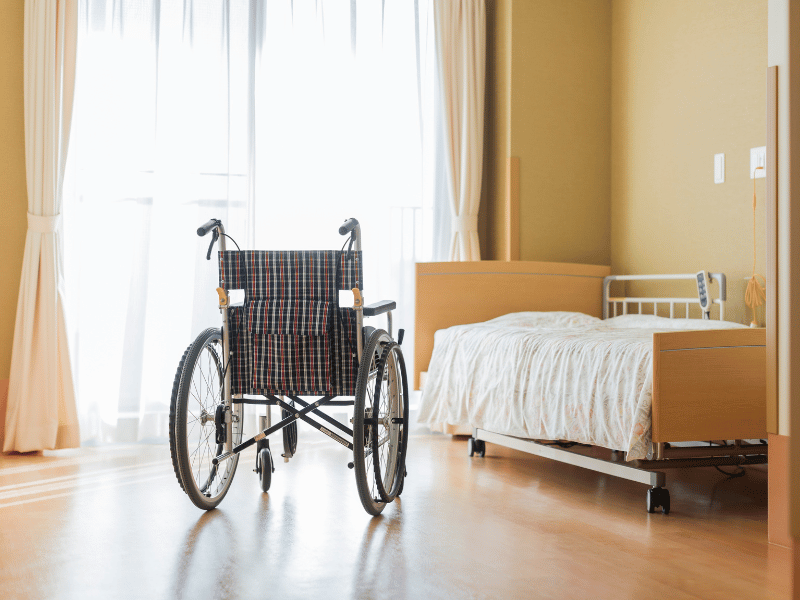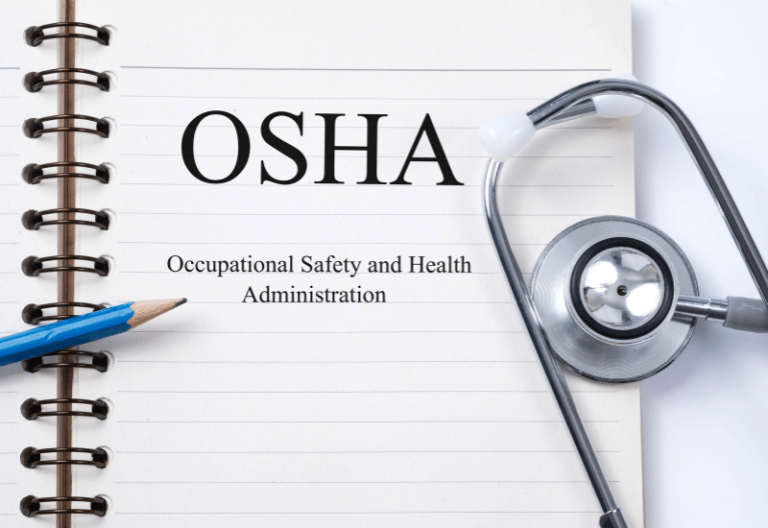Nursing homes and assisted living communities in the U.S. are getting more attention from the Occupational Health and Safety Administration (OSHA). Workers in these facilities often face work-related illnesses and injuries that may be prevented by following OSHA guidance.
Let’s discuss the key OSHA standards and directives for nursing homes.
Table of Contents

What Are OSHA Regulations for Assisted Living Facilities?
OSHA standards and OSHA directives and enforcement policies offer guidance on workplace safety and health for nursing homes and residential care facilities. Here’s a summary of each:
OSHA Standard on Bloodborne Pathogens
The Bloodborne Pathogens Standard (29 CFR 1910.1030) addresses the dangers of exposure to bloodborne pathogens, such as HIV, syphilis, malaria, hepatitis B, and hepatitis C. It encompasses the following measures:
- Establishing an Exposure Control Plan
- Implementing universal precautions to minimize contact with blood or infectious materials
- Ensuring availability of handwashing facilities and providing employees with necessary personal protective equipment (PPE) free of charge
OSHA Standard on Respiratory Protection
This standard is for the general industry, including those in healthcare settings. It aims to assist employers in executing a comprehensive respiratory protection program. It mandates various requirements, including updating the facility’s respirator program, complying with medical evaluation requirements, conducting annual fit testing of respirators, and implementing training and recordkeeping provisions.
OSHA Standard on Personal Protective Equipment (PPE)
This standard mandates that employers provide suitable PPE to workers exposed to environmental, chemical, radiological, or mechanical hazards. PPE includes protective gear such as clothing, respiratory devices, shields, footwear, gloves, masks, and eye protection. Even if employees bring their own PPE, employers are still responsible for verifying the equipment’s adequacy, sanitation, and maintenance.
OSHA Standard on Electrical Safety
This standard provides electrical safety requirements applicable to buildings, structures, and premises, including nursing homes and other healthcare facilities. The standard covers four main areas: design safety standards for electrical systems, safety-related work practices, safety-related maintenance requirements, and specific provisions for special equipment.

OSHA Standard on Hazard Communication
OSHA standards for assisted living facilities include protection for workers frequently exposed to hazardous chemicals that could lead to illness or fatalities. Employers are mandated to implement a written hazard communication program. This program should encompass guidelines on labeling and warnings, safety data sheets, and employee training, ensuring that workers are adequately informed and protected from the dangers posed by hazardous chemicals.
OSHA Standard on Recording and Reporting Occupational Injuries and Illnesses
OSHA requires certain employers to keep an OSHA 300 log of work-related injuries and illnesses, such as those caused by tuberculosis or bloodborne pathogens. Employers in industries covered by the OSHA recordkeeping rule and with over ten employees should submit this log form. However, all employers, regardless of size or industry, should submit the OSHA 300 log if an incident leads to death, hospital confinement, amputation, or eye loss.
Enforcement Procedures and Scheduling for Occupational Exposure to Workplace Violence
The OSHA currently doesn’t have specific standards for workplace violence. However, it provides this directive in evaluating and controlling this type of hazard in the workplace. This guidance requires employers to implement a written workplace violence prevention program to address workplace violence, both fatal and non-fatal. It also describes the OSHA inspection process in response to complaints, referrals, fatalities, or catastrophic events related to workplace violence. If an OSHA inspection or investigation reveals employer negligence, citations may be issued, and the employer could face violations.
OSHA developed specific types of workplace violence to assess complaints and identify risk factors and prevention programs. OSHA includes the following types of violence in this directive:
- Violent acts by people who enter the workplace to commit a robbery or crime
- Violence toward employees by customers, clients, and patients
- Violence toward co-workers, supervisors, or managers by a current or former staff
- Violence by someone who isn’t an employee but who knows or has a personal relationship with an employee at the workplace

Inspection Guidance for Inpatient Healthcare Settings
This OSHA memorandum guides inpatient healthcare settings, including nursing homes and residential care facilities. Hazards identified include:
- Musculoskeletal disorders (MSDs) related to patient handling and workplace violence (WPV)
- Bloodborne pathogens (BBP)
- Tuberculosis (TB)
- Slips, trips, and falls (STFs)
- Exposure to multi-drug resistance organisms (MDROs)
- Hazardous chemicals
The directive aims to reduce overexposure to these hazards through enforcement, compliance assistance, outreach, and training.
Common OSHA Violations in Nursing Homes
OSHA standards for nursing homes are important to reduce OSHA violations. OSHA shows common violations in nursing care facilities from October 2022 through September 2023. These OSHA citations indicate areas where nursing care facilities need to improve their compliance with OSHA regulations to ensure the safety and well-being of their employees:
- respiratory protection
- bloodborne pathogens
- general safety
- hazard communication
Creating a Safe and Compliant Environment in Assisted Living Facilities
OSHA regulations for nursing homes help create safe and healthy workplaces. While the standards are rigorous, following them keeps workers motivated and productive. Employers managing assisted living facilities should take the time to read OSHA rules, consult with certified trainers and experts, and ensure compliance with various safety and health protocols.







